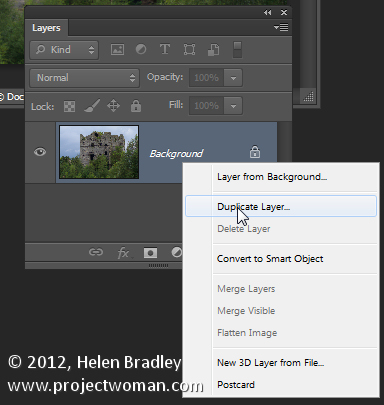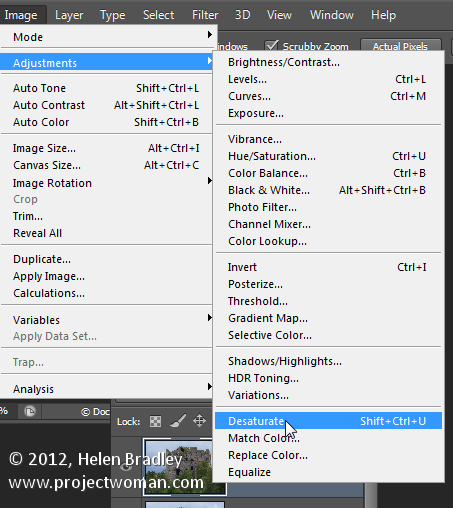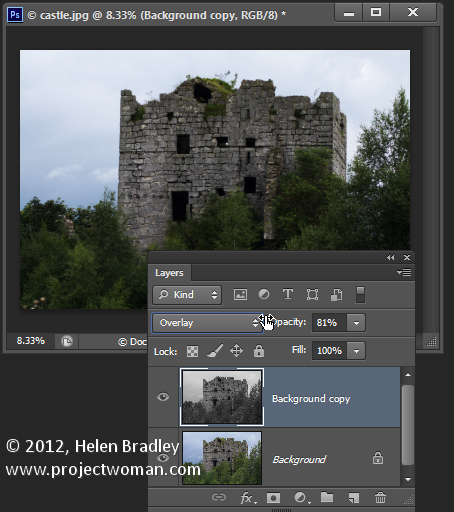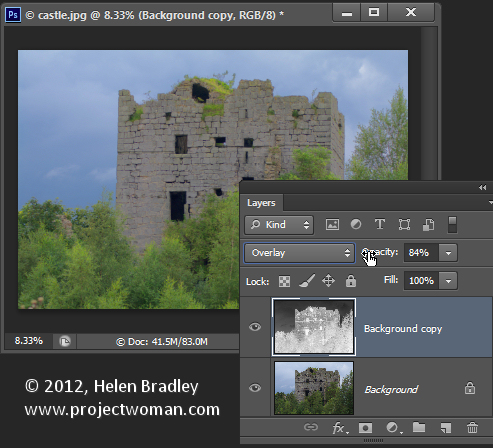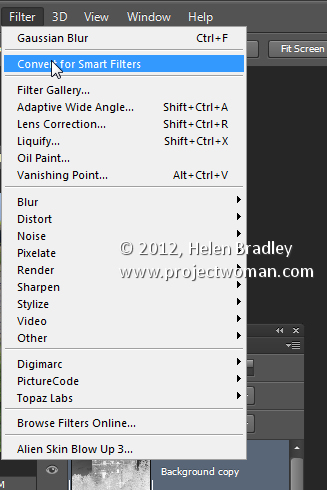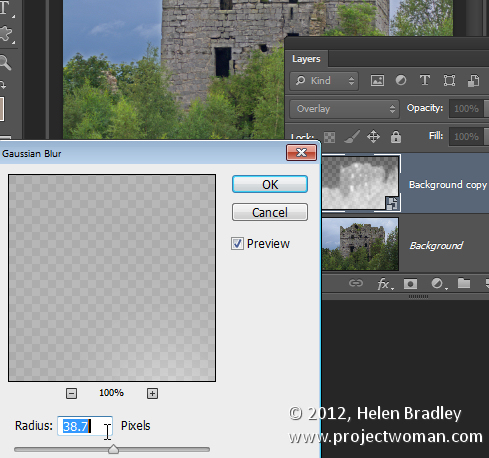Here I show you how to create works of art using your images in Photoshop. Included is how to find and select texture images to use, how to blend these into the image and, how to add a lightening effect to highlight areas of the image to draw attention. Also, included is one method of adding a vignette to an image.
Transcript:
Hello, I’m Helen Bradley. Welcome to this video tutorial. In this tutorial I’m going to show you how you can make art from your photos using textures in Photoshop. Before we get started with this video tutorial let’s have a look and see what we’re aiming for. This is the image that we’re aiming for. And quite often when I’m doing these tutorials I’ll play around with a few images before I come up with something that I really want to share. But today it was just this one image, this one texture and the whole thing just blew my mind. So here it is in video form.
To start off with I’m going to show you where I got my textures because these textures are totally awesome and I love this guy’s work and I want to introduce it to you. So this is a Flickr photo stream and the guy is called Skeletal Mess. And he has a whole lot of textures that you can download. Now I downloaded this one. It’s very big but I just want to show you his set that he has on Flickr so you can see the sort of potential for what there is available. Now with this particular image I was having a look through his sets and just having a look to see what I might use. And this one really spoke to me and I’m going to show you why because we’ll go back to the image that I have and we’ll see why blue worked particularly well for this image. So let’s just wind back what I’ve done.
So I’m just going to the layers palette for this image and let’s go and create a brand new image. Okay, so here’s our duplicate image that we’re going to work with. That was what we were aiming for so now I’m going to take away the pieces that went to make up this image. Now you’ll see why I thought that that blue texture would work particularly well here because this image has no sky and if we can borrow the blue from this texture then that would give us an awesome result. We could have used this one too or this one and perhaps just rotated them. But this one really spoke to me so I downloaded that. So I’m just going to grab it now because whenever I download an image even though I can just drag and drop it into Photoshop I’ll also save it just in case I want to use it again later on.
So I’m just going to bring it in here. It’s a whole lot smaller than my image but because it’s a texture that doesn’t really matter. So now I’m going to grab the move tool and just size it to fit all the way across my image. And again because it’s a texture it doesn’t matter that it’s pulled a little bit out of square. So it’s been pulled a little bit wider than it was tall. The next thing I’ll do is just run down these blend modes and just see what it gives me because this is like totally the most exciting thing that you get to do. So I’ll just select Dissolve and then we’ll just run down these blend modes until we get what we’re looking at. And Multiply I think is probably the one I’m going to come back and use but let’s just see what there is in this list. And it was at the point at which I got to that Multiply blend mode that I thought I actually had something I really wanted to work with but you might find other things here that are speaking to you. There’s a whole lot of potential. I usually run down the list and then come back up and by then I’ve pretty much made my choice as to what is working for me. This one possibly but it’s not nearly as good as the Multiply one. So here’s the Multiply blend mode applied to this image.
Now having achieved that I thought in actual fact the middle of the image could be a bit lighter. So what I did was I added a brand new layer and from my tools palette which has gone walkabout here I just grabbed the elliptical marquee tool and just dragged out an oval on that image. I switched so that white and black would be my colors and I also added a feather to this. So I’ll choose Select and then Modify Feather. This is not a very sophisticated feather option but I’ll just add a 100 pixel feather radius to it. That just really softens this edge so now when I fill it by pressing Ctrl Backspace, Command Backspace on the Mac, it’s going to have this feathered soft edge. So now Command or Ctrl D to deselect the selection.
Now I have a big white splat right in the middle of image. That’s obviously not going to work but what I’d want to do then is to blend it in so again I’ll just select the first blend mode in the list and then just run down until I find something that works for me. And here’s Overlay blend mode. That’s lightening that image really well in the area where the lightening effect was. I’m thinking that’s probably the blend mode of choice. But let’s just go and check these others particularly in this lighter area with soft light, hard light, vivid light and pin light. You’re never really sure that they’re not going to give you something so I always run through those just in case one is better than the other. So we’re pretty much to the end and Overlay is going to be our choice. So I’m going back up to pick up Overlay. Now this is too white for me so I’m just going to drag down on the opacity of that layer just to make it a little less opaque. I’m also going to test around this area. I’m thinking that some of this lightness is coming through from this layer and it’s probably a bit more than I want.
So again I’m going to add a layer mask to this layer, go and grab a paintbrush and just paint with black with a very small opacity brush, you can see it’s only 26 percent opacity, just to knock out the bits where I think the lightening effect is too much. I really just want it on the front part of this boat. So once I’ve neatened that effect up now I’m thinking a vignette around the edge. Now there’s umpteen ways of adding vignettes. I’m just going to show you one of them. So a brand new layer, I’m going to go back to my marquee tool, this time the rectangular marquee, I’m just going to drag in around about probably an inch into the image and then I’m going to invert the selection, select Inverse so everything that was selected is now not selected.
So I’ve got this outside edge selected. Now I’m going to sample a color from the image by clicking the eyedropper. I’m thinking one of the colors around here is kind of pretty good. It’s sort of dark but not really, really dark. I’m thinking that color was pretty good. And now I’ll Alt Backspace, Option Delete on the Mac, to create that as my fill color. Now I can deselect my selection with Ctrl or Command D. Now this is not looking like a vignette but that’s fine because we’re going to again run down our blend modes and look for something that is going to give us a darkening effect at the edge. Things you would look for are going to be in this light field. Obviously Overlay is going to do it. Multiply will do it as wells. That will always darken everything up a little bit.
So they’re the ones to look out for but also look out for any surprises as you run down. You might see something that gives you an effect that makes you go oh, wow, that is just too amazing. So I’m headed towards probably Overlay. So now it’s still not the vignette effect that I want but I’m going to blur this. So with that layer selected I’m going to go Filter > Blur > Gaussian Blur. Gaussian Blur is an awesome blur for just blurring things to almost oblivion. So here it is at zero radius effectively and now we’re just going to wind it up to soften this edge and pretty much just blend it into the image. And at some point it just becomes a really, really nice soft vignette effect for our image. So I’m just going to click Ok.
So there we have the effect. It’s very, very simple. This is a throwaway image. It’s just the sky is gone. It’s Hong Kong. It’s smoggy. It’s an overcast day. The sky is just nonexistent and I really wouldn’t have given this image a second look except that I was looking for a challenge. Add a really nice texture from Skeleton Mess free online textures from Flickr, add a bit of a highlight in the middle and then add this vignette effect and we’ve got an image that is now a keeper.
I’m Helen Bradley. Thank you for joining me for this video tutorial. Look out for more of my tutorials on this YouTube channel. Please subscribe and also visit my website at projectwoman.com for more tips, tricks and tutorials on Illustrator, Photoshop, Lightroom, iPad and a whole lot more.



